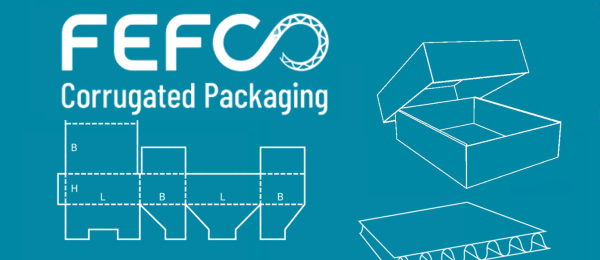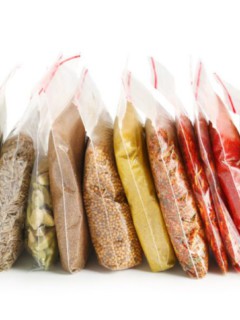The hand is a true workhorse, as it is our most important tool for almost all work. Yet it is an anatomical marvel: the human hand consists of 27 bones and thus has a quarter of the bones in the human body. It contains 33 muscles and 3 nerves as well as four vascular nerve bundles per finger, which are responsible for its functioning. In addition, each palm has 17,000 tactile corpuscles.
Anyone who has cut their fingertip on paper or got a splinter (no matter how small!) in the palm of their hand while gardening will realise how incredibly often we use our hands and fingers and how much even minor injuries to the hand can restrict our everyday life.
Properties of hand protection
Hand protection is essential for many reasons. The protection seeker is offered an overwhelming variety – depending on the area of application, material, surface, gripping properties… The first question in the search for the right glove must be: Should the hand be protected from the material or the material from the hand?General requirements for hand protection: The EN 420 standard
34% of all reportable occupational accidents involve the hand, according to DGUV statistics (2018). Hand injuries thus clearly lead the field of occupational accidents (ankle and foot injuries follow in second place with only 18.4%). Protective gloves are therefore mandatory for many occupational groups and are an essential component of personal protective equipment (PPE) (for more information on PPE, see the article on work clothing and protective clothing).- Manufacturer
- Article name
- Size designation
- CE marking
- Pictogram (from CE category II)
- Expiry date (if required)
If the labelling cannot be applied directly to the protective glove, it must be printed on the packaging.
In addition, there are pictograms that show which risks the glove protects against. However, this labelling of protective gloves may only be applied if the glove fulfils the minimum requirements of the specified standard. The standard clarifies the test procedures that the respective glove must undergo in order to enable the user to make comparisons.
Protective glove categories – these types are distinguished
Depending on the type of external influence against which the hands are primarily to be protected, the hand protection is tested according to a specific standard and labelled accordingly:- Protection against mechanical risks such as abrasion or cuts (protective gloves with the marking according to EN 388)
- Protection against thermal risks such as high heat and fire (protective gloves with the marking according to EN 407)
- Protection against cold (protective gloves marked according to EN 511)
- Protection against chemical risks, e.g. when handling chemicals or micro-organisms (protective gloves with the marking according to EN 374)
Hand protection against mechanical risks – EN 388
All gloves that bear this mark comply with EN Standard 388 and protect against mechanical influences. Here too, there are still enormous differences, which are documented and categorised in elaborate test procedures. The following properties are tested:- Abrasion resistance: 0 = low to 4 = very high
- Cut resistance coup test: 0 = low to 5 = very high
In the coup test, a rotating circular knife moves back and forth on the specimen with a low force of 5 Newtons and rotates in the opposite direction to the movement. The number of cycles in which the sample is cut is determined. - Tear resistance: 0 = low to 4 = very high
Means: Is there already damage to the material?
For example, if there is already a cut: how quickly does the material tear further at this point? - Puncture resistance: 0 = low to 5 = very high
- Cut resistance according to ISO: A = low to F = very high
The coup test was extended to take into account the blunting effect of the test blade. If the blade blunts in the coup test, the test procedure according to ISO 13997 must be carried out and the cut resistance is indicated in the fifth position in the pictogram. The coup test result can then be indicated optionally. If the blade does not blunt, the coup test procedure is relevant and the test according to ISO 13997 can be performed optionally. - Protection against impact (P)
The test procedure according to EN13594:2015 can optionally be carried out to show protection against impacts. If the glove passes the so-called pass or fail test, a P for pass is shown below the pictogram after the fifth digit. If the glove fails, it is not marked.
If you find an X instead of a number in the marking, this means that there is no test value for the glove for this particular requirement.
The five-digit marking under the symbol thus provides information about the specific requirements for which the glove has the best protective properties. The coarser the influences against which the glove is to protect the wearer, the “stronger” the material must be. If, however, dexterity is more in demand, the material is also rather “finer” and thus the cut and puncture resistance is usually lower.
Hand protection against thermal risks – EN 407
If the hands are exposed to high heat during work, the gloves must be tested and labelled according to EN 407. Similar to the mechanical risks, the protective glove is tested for various properties during the test procedure and marked with numbers from 0 to 4 (or from 0 to 3). Here too, an x instead of a number means that no measurement results are (yet) available for this particular property:- Burning behaviour (0 low to 4 high)
- Contact heat (0 low to 4 high)
- Convective heat (0 low to 4 high)
- Radiant heat (0 low to 4 high)
- Exposure to small splinters of molten metal (0 low to 4 high)
- Exposure to large amounts of molten metal (0 low to 4 high)
Hand protection against cold – EN 511
Anyone who has ever forgotten their gloves in sub-zero temperatures knows this from personal experience: cold hands become stiff and lose their dexterity. At work, this means that tools or materials can no longer be used safely. Cold protection gloves bear the pictogram “cold risk” and thus comply with EN 511. Gloves classified in this way are tested with regard to their thermal insulation capacity in case of penetrating cold (=convection cold) and in case of contact cold, i.e. direct contact with cold objects, up to -50°C. In contrast to others, the pictogram is only provided with a three-digit numerical code. The following test criteria are therefore used for cold protection gloves (again, the better the test result, the higher the digit):- Convection cold resistance (0 to 4)
- Contact cold resistance (0 to 4)
- Water resistance (0 or 1)
The test for water resistance is voluntary. If the glove is marked 1, no water penetrated during the test after 30 minutes.
Hand protection against chemicals – EN ISO 374
For gloves that are intended to protect against chemicals, the European standards EN ISO 374-1:2016 are decisive.
The classification is based on 3 test methods:
- Determination of resistance to penetration* according to the standard EN 374-2: 2014: A harmful substance reaches the user’s skin more or less quickly through porous areas, seams, pinholes or other defects such as pores, holes or tears in the protective layer of a glove. With an air leakage test and
water leakage test to determine if a glove has leaks. - Determination of resistance to permeation according to standard EN 16523-1:2015. Permeation is the breakthrough time required for a hazardous substance to come into contact with the skin.
- Determination of degradation according to standard EN 374-4:2013 Degradation is the change in the material properties of the glove. The protective gloves can swell and lose their shape, become sticky or brittle. Degradation is determined by the change in puncture resistance of the glove material after continuous contact of the outer surface with the stressing test chemical*.
Type A glove marking
Protection against penetration, minimum breakthrough time ≥ 30 min for at least 6 chemicals from the list
Labelling glove type B
Protection against penetration, minimum breakthrough time ≥ 30 min for at least 3 chemicals from the list
Marking glove type C
Protection against penetration, minimum breakthrough time ≥ 10 min for at least 1 chemical from the list
The gloves are tested with the following chemicals:
The gloves are tested with the following chemicals:
| Code letter | Chemical | CAS number |
Substance class |
| A | Methanol | 67-65-1 |
Primary carbon |
| B | Acetone | 67-64-1 |
Ketones |
| C | Acetonitrile | 75-05-8 |
Nitrile compounds |
| D | Dichloromethane | 75-09-2 |
Chlorinated hydrocarbons |
| E | Carbon disulphide | 75-15-0 |
Sulphur with organic compounds |
|
F |
Toluene | 108-88-3 |
Aromatic hydrocarbons |
| G | Diethylamine | 109-89-7 |
Amines |
|
H |
Tetrahydrofuran | 109-99-9 | Heterocyclic hydrocarbons |
| I | Acetic acid ethyl ester (ethyl acetate) | 141-78-6 |
Ester |
|
J |
n-Heptane | 142-82-5 |
Aliphatic hydrocarbons |
|
K |
Sodium hydroxide 40 | 1310-73-2 |
Inorganic bases |
| L | Sulphuric acid 96 % | 7664-93-9 |
Inorganic mineral acids, oxidising |
| M | Nitric acid 65 % | 7697-37-2 |
Inorganic mineral acid, oxidising |
| N | Acetic acid 99 % | 64-19-7 |
Organic acids |
| O | Ammonia 25 % | 1336-21-6 |
Organic bases |
| P | Hydrogen peroxide 30 | 7722-84-1 |
Peroxides |
| S | Hydrofluoric acid 40 | 7664-39-3 |
Inorganic mineral acids |
|
T |
Formaldehyde 37 % | 50-00-0 | Aldehydes |
Hand protection against micro-organisms EN 374
Gloves that are to protect against microorganisms must pass the penetration test with bacteria and fungi according to the EN 374-2: 2014 standard, i.e. be free of leaks. The biohazard symbol is used as the pictogram. If the glove is also to protect against viruses, the protective glove must also pass a bacteriophage penetration test according to ISO 16604:2004 (method B) in addition to the penetration test with bacteria and fungi. The VIRUS marking can then be found under the pictogram.Pay attention to the material of disposable gloves
Disposable gloves are often used in laboratories, the electrical industry, the pharmaceutical industry, medical technology and doctors’ surgeries, but also in the food sector, as they offer good protection against many liquids. However, it must always be checked on a case-by-case basis whether and with which chemicals one will come into contact and which material can offer the best protection in each case. The Institute for Occupational Safety and Health of the German Social Accident Insurance (IFA), for example, offers very clear overviews for download.In addition to the duration of wear and the desired area of use (do I need particularly good tactile sensitivity?), the decisive factor in the selection process is the type of protection. Or is it more a question of short-term skin protection for “rough” activities?), personal sensation is also particularly important. Because of the close contact with the skin, it is important to check the skin compatibility of the individual materials – what is pleasant for one person may trigger allergies in another. Latex in particular should be tested first in connection with allergies.
Powdered gloves increase the wearing comfort, as the powder layer counteracts the development of sweaty hands. In addition, the powdered surface makes it much easier to put on and take off. The disadvantage: traces of the powder remain on the fingertips after taking them off and could contaminate objects touched immediately afterwards. Again: In case of an increased allergy risk, it is better to use one of the powder-free versions.
The material of work gloves can also be decisive: Gloves with a polyurethane coating are breathable and allow excellent dexterity. Protective gloves with a nitrile coating have very good resistance to grease, oil and alcohol. The advantage of gloves with a latex coating is that they are suitable for both dry and moist environments.




















